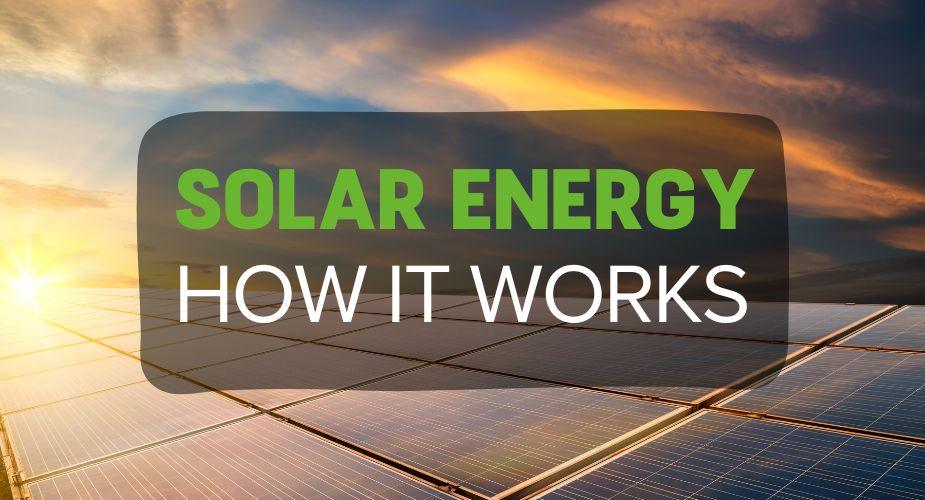The solar industry has experienced remarkable growth over the past decade, transforming the way we harness energy. From individuals installing rooftop systems to businesses powering their operations with solar, the shift toward clean energy is undeniable. While many people are familiar with rooftop solar panels installed on homes and businesses, another exciting development is gaining momentum — solar farms.
So, what is solar power plant? Solar farms are expansive installations that harness the power of the sun to generate electricity, often supplying power to entire communities or regions. These large-scale solar projects showcase human ingenuity and offer a glimpse into a sustainable future, where clean energy can be produced in vast quantities to meet growing energy demands. As more solar farms are developed worldwide, it’s clear they play a critical role in reducing greenhouse gas emissions and helping to achieve global sustainability goals.
In this article, we’ll explore what solar farms are, how they operate, and the important role they play in the transition to renewable energy. We’ll also compare solar farms to the more familiar rooftop solar systems, discussing the differences in scale, cost, energy distribution, and installation. Whether you’re curious about large-scale solar solutions or simply looking to understand how solar technology is shaping the future, we’ll dive into the key aspects that define what is a solar farm and its impact on the energy landscape.
What is Solar Farm, Types and its Benefits
How Do Solar Farms Work?
Are you curious about what a solar energy plant is like? It operates using photovoltaic (PV) technology, akin to the technology found in rooftop solar panels, but on a much larger scale. The fundamental principles of how solar farms function include the following steps:
- Solar Panels: Solar farms consist of thousands (or even millions) of individual solar panels. These panels are made from materials like silicon-based semiconductors that absorb sunlight. When sunlight strikes the solar cells, it generates an electric current through a process known as the photovoltaic effect.
- Inverters: The electricity generated by the solar panels is in the form of direct current (DC), which is incompatible with the electric grid that distributes alternating current (AC). Solar farms use inverters to convert the DC electricity into AC, making it usable for the grid.
- Power Grid: Once the electricity has been converted to AC, it is sent to the power grid. From there, the electricity is distributed to homes, businesses, and industries, providing renewable energy to many users.
- Tracking Systems: Some solar farms use solar tracking systems that move the panels throughout the day to follow the sun's movement. These systems maximize the amount of sunlight captured, thereby increasing energy production.
- Energy Storage: Some farms incorporate energy storage systems, like batteries, to store excess electricity for use during nighttime or cloudy periods.
Now that we’ve explored the mechanics of solar farms, let's compare them with rooftop solar systems. Although both technologies harness solar power, they operate on very different scales and serve distinct purposes.
Types of Solar Farms
Solar farms come in two primary types, each serving different purposes and varying in scale: utility-scale solar farms and community solar farms.
- Utility-Scale Solar Farms
Utility-scale solar farms are the largest type of solar installation and are designed to generate power for the electricity grid on a massive scale. These farms are often located in remote areas with abundant sunlight, such as deserts or open rural spaces, where large tracts of land are available.
- Size: Utility-scale solar farms can span hundreds or even thousands of acres and typically consist of tens of thousands to millions of solar panels.
- Purpose: These farms supply electricity to utility companies, which then distribute the power to homes, businesses, and industries. The energy produced by these farms is often sold under long-term contracts to utility companies, ensuring a steady supply of renewable energy to the grid.
- Examples: Some of the world’s largest utility-scale solar farms include the Bhadla Solar Park in Northwestern India (largest solar park in the world) and the Tengger Desert Solar Park in Zhongwei, Ningxia, China.
- Community Solar Farms
Community solar farms are smaller-scale installations designed to benefit a local community or group of people. These solar farms allow individuals or businesses to purchase or lease a portion of the solar panels and receive credits for the energy their panels generate.
- Size: Community solar farms are much smaller than utility-scale farms, typically covering only a few acres.
- Purpose: These projects provide an opportunity for individuals who cannot install solar panels on their property (e.g., renters, those with shaded rooftops) to still benefit from solar energy. Participants in community solar programs share in the output of the farm and receive credits on their electricity bills for the energy produced.
- Examples: Community solar programs have become popular in many countries, particularly in the United States and Europe, where regulatory frameworks support shared solar projects.
Importance of Having of Solar Farms
The development of solar farms plays a crucial role in addressing various environmental, economic, and social challenges. Here are several key reasons why solar farms are important:
- Reduction of Carbon Emissions
One of the most significant benefits of solar farms is their ability to reduce carbon dioxide (CO2) emissions. Fossil fuels, such as coal and natural gas, are the primary sources of greenhouse gas emissions that contribute to global warming and climate change. In contrast, solar energy produces electricity without emitting harmful pollutants. By replacing fossil fuel-generated power with clean, renewable solar energy, solar farms help decrease the amount of CO2 released into the atmosphere.
In fact, every megawatt-hour of electricity generated by solar farms can prevent the release of approximately one ton of CO2. Over the lifetime of a solar farm, this can add up to millions of tons of CO2 avoided, making a substantial impact on reducing global emissions.
- Energy Independence
Solar farms can contribute to energy independence by reducing the reliance on imported fossil fuels. Many countries, especially those with abundant sunlight, can harness solar power to generate electricity domestically. By producing more renewable energy, countries can decrease their dependence on energy imports and reduce exposure to volatile global energy markets.
- Economic Growth and Job Creation
The solar industry is a major source of economic growth and job creation. Solar farms create jobs in various sectors, including manufacturing, installation, maintenance, and research. The construction and operation of solar farms require a workforce, providing employment opportunities for local communities. In addition, as the solar industry expands, it attracts investment and boosts local economies, especially in rural areas where solar farms are often located.
- Sustainable Land Use
Solar farms make efficient use of land that might otherwise go unused. For example, solar farms can be built on land that is unsuitable for agriculture, such as deserts or areas with poor soil quality. This allows for the productive use of land that would otherwise have limited economic value. Moreover, solar farms can coexist with other land uses, such as agriculture (a practice known as agrivoltaics), where crops are grown under or between solar panels.
- Energy Access for Remote Areas
In many parts of the world, particularly in developing countries, access to reliable electricity is limited. Solar farms can be installed in remote or off-grid areas to provide a stable source of power. Solar farms can bring electricity to communities that previously had no access, improving quality of life, education, and healthcare.
- Reduction in Energy Costs
As solar technology continues to advance, the cost of generating electricity from solar energy has decreased significantly. In many regions, solar power is now one of the cheapest sources of electricity, even compared to fossil fuels. Solar farms help drive down energy costs by providing a stable and affordable source of electricity, which can be passed on to consumers in the form of lower utility bills.
- Energy Security and Grid Stability
Solar farms contribute to energy security by diversifying the energy mix. Instead of relying solely on fossil fuels, which can be subject to supply disruptions and price fluctuations, solar energy provides a stable and predictable source of power.
Solar Industry Innovation
Innovative companies are making renewable energy more accessible and efficient, creating products that meet the needs of various users, from homeowners to large-scale operations. Nature's Generator, a prominent player in the renewable energy space, provides an excellent example of innovation, particularly in portable and small-scale solutions. In contrast to large solar farms, Nature's Generator provides off-grid solutions and portable systems that meet the needs of consumers looking for smaller-scale solar options, such as backup power for homes, RVs, and off-grid living. For more information on their products, feel free to contact the team here.
Final Thoughts
What is solar farm does is vital for the global shift toward renewable energy. Solar farms harness sunlight to generate electricity, helping to reduce carbon emissions, enhance energy independence, create jobs, and deliver clean, affordable power to millions. With ongoing advancements in solar technology and energy storage, the capacity of solar farms to meet increasing energy demands worldwide is immense. Investing in solar farms is not just a commitment to a cleaner, greener future but also a step toward a more sustainable and resilient energy system.
* We want to give credit where credit is due. Professional writer, Michelle Ann Gamana, contributed research and content to this blog titled: What is Solar Farm? Thank you, Michelle, for your contributions!













